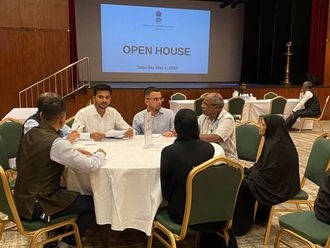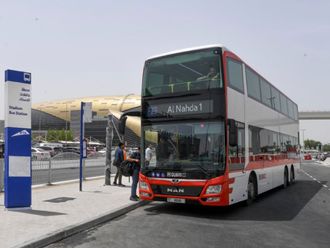India is capable of designing and fabricating nuclear weapons from low yields up to around 200 kilotons following the Pokhran tests in May 1998, Atomic Energy Commission (AEC) chairman Rajagopal Chidambaram yesterday said.
In his Founder's Day address to the staff of the Bhabha Atomic Research Centre (BARC) on the occasion of the 91st birth anniversary of Dr Homi Jehangir Bhabha, the architect of nuclear India, Chidambaram said the five tests "gave us the capability to design and fabricate nuclear weapons ranging from low yield to around 200 kilotons".
Since 1998 "a great deal of scientific and technological development has taken place," he told a meeting of nuclear scientists and technocrats at the BARC near Mumbai.
Anil Kakodkar, Director, BARC, also speaking on the occasion, said, "Post test investigations following May 1998 tests are nearly complete. These have confirmed that all objectives of the tests have been fully met."
Reiterating Prime Minister Atal Bihari Vajpayee's declaration more than two years back that India was now a nuclear weapons state, Chidambaram said: "The five carefully-planned and completely successful nuclear weapon tests we carried out in Pokhran in May 1998 and the confirmation of the design yields by seismic, radiochemical and other studies carried out by BARC gave us the capability to design and fabricate nuclear weapons of yields from low-yields up to around 200 kilotons."
He later refused to elaborate whether India would go for further nuclear weapon tests in the future. India has declared a moratorium on future nuclear tests. In March this year Vajpayee had stated that India needed to maintain a credible minimum nuclear deterrent. Until now there has been no clarification as to what that minimum nuclear deterrent implies though the nuclear lobby here has urged for more tests.
Talking on the nuclear power programme which has been neglected for some years, Chidambaram stated that the central government, that has given a strong backing to the nuclear programme, had recently decided to give a "mega project" status for projects in the nuclear power sector, starting from 440 megawatt.
"This will bring down the capital cost of all our nuclear power projects. The Nuclear Power Corporation of India Ltd (NPCIL) is also trying to bring down the gestation period of construction of nuclear power plants," he said.
Inevitable option
According to him, nuclear energy will be the inevitable option to satisfy not only India's but the world's energy needs in the context of rising oil prices. "Even in countries which are currently seeing a slowdown in their nuclear power development programme, it is likely that a reversal would occur due to a substantial rise in oil prices as is happening now and secondly due to the possibility of the global warming phenomenon caused by greenhouse gases becoming more serious."
With an optimistic future for the nuclear power industry, he said the aim was for a nuclear installed capacity of 20,000 MW by 2020 – an achievable target with a mix of pressurised heavy water reactors, fast breeder reactors and light water reactors.
"This reflects a doubling time of about seven years."
Chidambaram said India has some of the world's leading nuclear experts, "not just in the nuclear weapons area" but in fields such as material science, mathematics, gamma-ray astronomy, superconductivity, radiation safety, gene therapy in cancer, chemical engineering and so on.
"This is recognised worldwide. In the nuclear field we are considered internationally a developed rather than a developing country. India is a founder-member of the International Atomic Energy Agency (IAEA) where we are now a technical assistance-giver, not a taker."
India can build 200 kiloton bomb
India is capable of designing and fabricating nuclear weapons from low yields up to around 200 kilotons following the Pokhran tests in May 1998, Atomic Energy Commission (AEC) chairman Rajagopal Chidambaram yesterday said.










